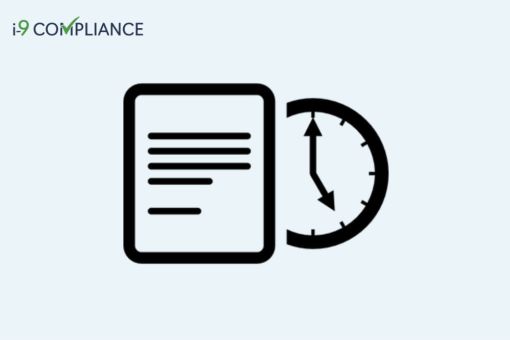What To Do If Your Employee Has A Lapse In Their EAD Validity Period?

An employment authorization card (EAD), also known as a work permit, authorizes qualifying foreign nationals to temporarily work in the United States. EADs also count as valid documentation for completing Form I-9. An EAD works as proof of employment authorization only if it has not expired or has an extension after its expiration.
Automatic Extensions
Automatic extensions only apply to specific categories of EADs. For example, suppose an individual has an EAD in a category that qualifies for an automatic extension. In that case, they will receive the extension if they file a renewal application before the expiration date of the last valid EAD they possessed.
Individuals can show they are eligible for an automatic extension by presenting their expired EAD card and a copy of Form I-797 or a USCIS receipt notice for the pending I-765 application to renew the EAD in the same category. The category must qualify for an automatic extension.
Generally, an automatic extension lasts 180 days from the expiration date for the previous EAD. But because of the large adjudication backlogs the USCIS has, the current automatic extension period is 540 days. According to the USCIS, this extension will apply if the individual filed their I-765 renewal either:
-
- “Before May 4, 2022, and your 180-day automatic extension has since expired;
- Before May 4, 2022, and your 180-day automatic extension has not yet expired;
or
- Between May 4, 2022 and October 26, 2023, inclusive of these dates.”
The 540-day automatic extension will no longer apply for applications filed after October 27, 2023, as the 180-day automatic extension will once again apply.
What If an Employee’s Employment Authorization Document Expires Without Eligibility for Auto-Extension?
If an employee’s employment authorization expires, the employer must revert to the employee’s Form I-9. For example, suppose the employer discovers during the verification that the employee’s EAD is expired, the employee has not obtained a new card, and is not eligible for an automatic extension. In that case, the employee is no longer eligible to work until they get a new EAD. As a result, some employers have questioned whether termination and rehiring an employee are necessary or if placing the employee on unpaid leave would be acceptable. Unfortunately, the Department of Homeland Security has not provided guidance for employers in this situation.
Therefore, the safest approach would be termination and rehiring once the employee acquires a new EAD. The Immigration Reform and Control Act of 1986 (IRCA) explains that it is illegal for employers to hire or continue employing someone unauthorized to work in the US. Therefore, whether placing an employee on unpaid leave is acceptable depends on whether the IRCRA still considers the person an employee. But to avoid any potential liability should there be enforcement action, it would be safest to terminate and rehire the employee after acquiring a new EAD.
Streamline your hiring process with an automated employment eligibility verification and ensure compliance today with I-9 Compliance.